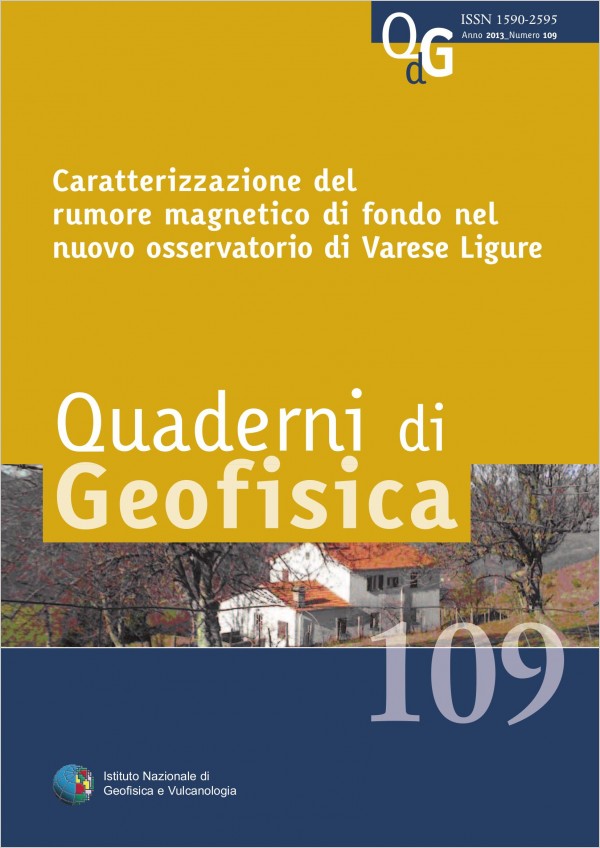Caratterizzazione del rumore magnetico di fondo nel nuovo osservatorio di Varese Ligure
Main Article Content
Abstract
The accuracy of geomagnetic field measurement at a given point on the Earth's surface is limited by the ambient magnetic noise level which is usually determined by the superposition of signals generated from different sources. The noise that dominates in all physical systems, particularly in spectral regions at lowest frequencies is the flicker noise [Vladimirov and Kleimenova 1962]. The analysis of the background noise that exists on the site is essential to design a new magnetic Observatory. Noise measurements allow then to evaluate the magnetic pollution status of the area and constitute a basic cognitive tool for the building of a new magnetic Observatory. Only by comparing signals of natural origin and the noise is possible to characterize the site. The purpose of this note is the separation of local and regional magnetic noise from signals of external origin. In the near field zone gradients are very high, the contribution of these sources depends much on the source-observer distance. The noise level at a given point is determined not only by the intensity and the distance from sources but also on the electromagnetic characteristics of the site where the measurement is performed, i.e. on the electrical conductivity structure of the subsoil, which determines the electromagnetic Earth-source coupling. From a single measurement point it is difficult to separate the signal from the noise even in the near field zone. However since the two signals have some peculiar properties which affect the field boundary conditions on the Earth's surface you can take advantage of these features to separate them. In the near field, magnetic natural signals coming from magnetosphere and ionosphere are always curl-free and divergence-free while artificial signals are almost always divergent and curled. In the far field instead both signals are curl-free and divergence-free. Another aspect concerns the spectral properties of signal and noise that both have a trend Cf -α where C is a constant of proportionality, f is the frequency and the coefficient is different for the two types of signals [Vladimirov and Kleimenova, 1962]. In geomagnetism there are three frequency bands of interest useful to evaluate the noise: the first is the spectral range that extends from nHz to μHz, the second is that from μHz to mHz and the third band is the one that coincides with the range of magnetic pulsations [Jacobs, 1970], [Troitskaya, 1964] originated from magnetospheric and ionospheric sources (1mHz-1Hz). In this note an analysis of stationary noise component only in the third band of frequencies has been made.
Article Details
Section
Article

This work is licensed under a Creative Commons Attribution 4.0 International License.

